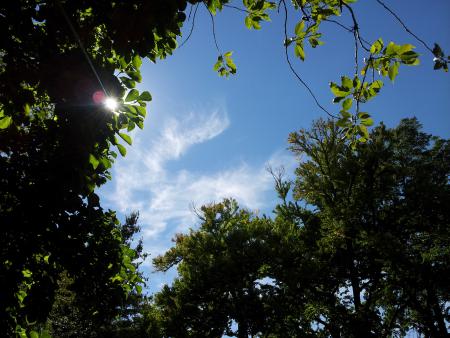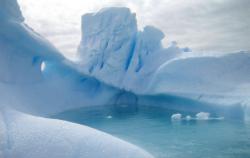Serendip is an independent site partnering with faculty at multiple colleges and universities around the world. Happy exploring!

Maid in Silence: The Hidden History of Bryn Mawr's Housekeepers
I realized that by including my paper via attachment (because of picture issues), I wasn't creating a searchable document. So here it is in the best form I could get. The first picture is cut off on the side for some reason. Please follow links to see whole picture.
Maid in Silence: The Hidden History of Bryn Mawr’s Housekeepers

Crime and Punishment at Bryn Mawr College
How are you coming to understand women’s prisons and colleges as similar and/or different?
When I first started researching for this project, I was going to study crime and punishment at Bryn Mawr, specifically rape culture at Bryn Mawr, and how victims and perpetrators of rape at Bryn Mawr have been treated and characterized in the history of the school. Given that Bryn Mawr is an all female institution of higher education, both cloistered in terms of gender and in terms of physical space, and taking into account recent conversation about how Bryn Mawr takes a caretaker role in its treatment of its female students, I thought this to be a very interesting topic to discuss in relation to the overarching topic of women in walled communities. However, as I conducted my research I realized that in order to really get an understanding of this I would have to get first hand accounts of incidents of rape in the history of the college as well as interview campus safety officials about their experiences with rape cases on campus; the aforementioned would be difficult given the lack of voice on the issue of rape among women in earlier times and the latter would require IRB approval. Given the time for this project, I realized this would not be possible.

ECOnversations - An assembly of Dialogue, Podcasts, Questions, & Textual References on Representation, Stories, & Patterns
I. Movement As and Within Thought - A New Way of Looking at Representation

David Bohm -
“Thought tending to divide things into separate entities...each particle is only an abstraction of a relatively invariant form of movement in the whole field of the universe”
Do you think of a thought as distinct, separate particles or interconnected, flowing waves? How can this apply to representation? Are different representations separate particles or can they be abstract and interconnected?
Click: Movement Within/As Thought Podcast
II. What kind of representations are useful? How many do we need?
E: I wonder whether it is possible to “read” nature without the lens of experience. In other words, can we understand a story of the landscape without an understanding of (many) other stories?

Reflections on Reflections from Coetzee's - The Lives of Animals
Upon reading the reflections at the end of Coetzee's The Lives of Animals, I find that each of them serve to function as conveyers of the author’s (Coetzee’s) deeper motives and to bring them to light as well as to illuminate specific aspects of the work The Lives Of Animals. I find that each of them had unique takes on the work and unique ways of approaching them. Marjorie Garber used a more traditional critiquing and analyzing approach to the work by pointing out Coetzee’s possible motives and criticizing a few aspects of the work. She states that the format of the lecture (“a lecture within a lecture, a response within a response”) is a “strategy of control.” This strategy serves to “insulate the warring ideas…put in play by academics [such that] we don’t know whose voice to believe.” I agreed with this viewpoint because although I found Elizabeth Costello to play a central role to the piece, I found the voices of Norma and her Son to be distracting and also influential upon my experience with the work, beyond the words offered only by Elizabeth. Marjorie also points out Coetzee’s use of the Holocaust analogy, and in my opinion, subtly points out its inappropriate use in the work. She states of Elizabeth’s’ Holocaust analogy “could it be part of any analogy…it is the event beyond analogy many people say.”

thoughts about "How Offenders Transform Their Lives"
The reading “How Offenders Transform Their Lives” kept reminding me of our discussion in Voice class today about GirlTime. Someone in class brought up how self-congratulatory many of the people in charge seemed about the program, and how that was a negative aspect because it seems to eliminate possibilities for the program to effectively critique itself and become better for the girls it was attempting to change. In addition, it was brought up that the program was supposed to be for those girls, not necessarily for the volunteers involved. However, I also thought that the reverse would have been equally negative, if not worse. If the women (teacher-artists) had maintained the position that they were the authority and the program had no effect on them, they would have reinforced a sense of hierarchy, a separation between the girls and their more “enlightened” positions. Positioning themselves as authority figures, they would have continued to perpetuate the sense that there was a fundamental difference between themselves and these girls. Doing this places even more importance in their authority, the necessity of having someone “in charge” who by the nature of their position, knows more than those they are intending to change. It sets up a dynamic of us/them, perpetuates the “normal” vs. “other” attitude that can be so damaging to how people chose to live their lives.

Interdisciplinary Rambles and Education
On November 18th, Rachel and I met up with our 3 freshmen partners (Alex, Hannah, and Rochelle) to conduct both the botanical tour and the geographic tour of Bryn Mawr. We began by first sitting down at our usual circle chairs outside of English and having a discussion in which we compared and contrasted our two classes. While there was certainly some similarities (they are of course taking an ecological-minded class as well) there did exist some differences, mostly in terms of the texts we read. Following this, Rachel and I brought the freshmen into the woods and had them examine privet, viburnum, spice bush, beech trees, and tulip trees. In turn, the freshmen brought to various buildings and structures around campus and explain to us the composition of each particular building, and highlighted particular usage of Wissahickon Schist and Baltimore Nice on a few of the buildings and contrasted their attributes. As we finished up the Interdisciplinary Ramble of the campus at the Bryn Mawr Fieldhouse, our combined groups discussed what we had learned through each of the botanical and geological examinations of the campus. We ended with an agreement that the current landscape of the campus did consist of the natural landscape but in the process of being turned into a college campus the landscape had to incorporate imported components (such as Baltimore Nice and the non-native species in the woods).
Cezanne on Nature
"When I judge art, I take my painting and put it next to a God made object like a tree or flower. If it clashes, it is not art." - Paul Cezanne
I thought this was an interesting quote by Cezanne on nature that came up in Art History the other day. Putting this in context, many artists, when painting landscape, would copy elements from paintings in the Louvre and put it into their work. Cezanne thought that to create art you have to look at the original object. I wonder if Cezanne would disapprove of Morton?

Plastic?
Today, at the ever-surprising space that is my observation spot, there is melted plastic covering a lot of the steps. Tuesday night, while walking out of Erdman, I saw a small fire inside the circle. I didn't react to it because I could hear people around it and they did not seem concerned. Maybe they were burning some particularly nasty graded assignment or conducting an experiment or getting rid of a bad memory. I don't know. I guess I figured they must have had a reason.

Cold

I went to my site sit this morning. I looked at the cut vegetation and I felt one sensation, COLD. This got me thinking about whether there is any connection between our society’s dislike of the cold (think about how much they overheat the dorms in the winter) and our views towards global climate change. It seems that climate change is helping to speed up the inevitable warming of the planet (http://www.ecy.wa.gov/climatechange/whatis.htm)



